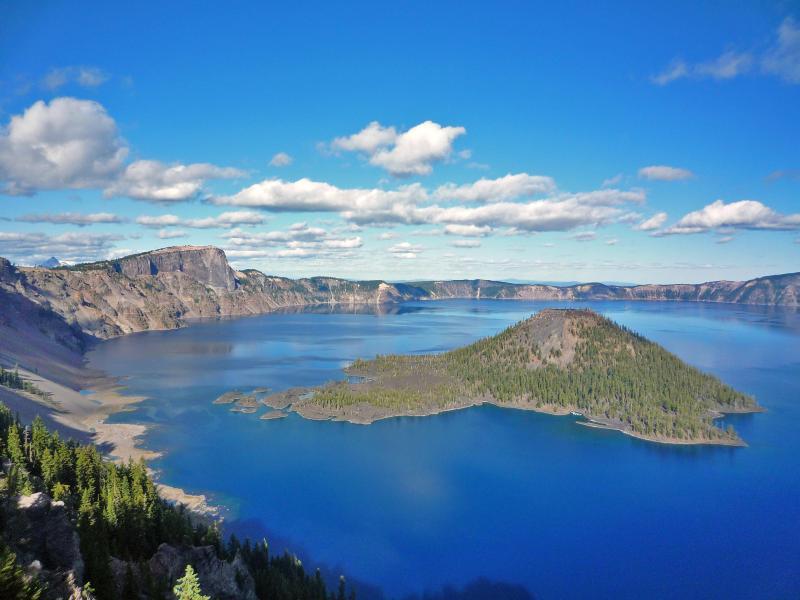Ancient volcanoes may contain vast deposits of lithium, a crucial element in modern batteries
Crater Lake in Oregon is a prime example of a large caldera, the huge hole in the ground created by an ancient volcanic eruption. Calderas typically fill with water over millions of years and form pristine lakes. Their sediment may be a future source of the important element lithium.
When it comes to volcanoes, there isn’t exactly a crystal ball that will tell scientists when the next eruption will take place, but there is crystal debris that is helping researchers see what’s going on below the surface of a volcano.
These crystals, formed in the magma chamber, are ejected along with the lava and volcanic ash during an eruption. Trapped inside these crystals is a bit of magma, preserving all the details of what it was like inside the chamber.
Scientists believe these blebs of magma will tell them about the ideal conditions for producing the increasingly important element lithium, according to Tom Benson, a recent PhD in the Department of Geological Sciences at Stanford University and the lead author of a paper on the subject.
“We all have these little devices in our pockets, called smartphones, and many of us drive Teslas or other hybrid or electric vehicles,” he explains. “All of these modern technologies use lithium ion batteries. … These are very highly efficient and relatively low-cost batteries that are taking the world by storm. Demand is drastically increasing by the day, so it’s really important for us to understand where this lithium comes from in order to meet our future demand.”
Currently, the world mines most of its lithium in two countries, Australia and Chile. Lithium forms in salt deposits and in an igneous rock known as pegmatite, which is a type of crystalline granite.
One of the fundamental properties of lithium is its volatility, Benson says. When a volcano erupts, it releases a large gas plume into the air. Since lithium is so volatile, it escapes the atmosphere and can’t be measured in the rock that solidifies on the surface of the Earth after an eruption.
So, scientists use a “tricky technique” involving melt inclusions — tiny blebs of magma trapped in the crystals as they grow within the magma chamber of a volcano — to study the levels of lithium in a pre-eruptive volcano, Benson says. “These blebs preserve the pre-eruptive concentration of lithium before all of that degassing occurs.”
Lithium deposits are found mainly in old, dormant volcanic systems, particularly in what are called supervolcanoes or, more scientifically, large caldera systems. Crater Lake in western Oregon is a good example of one of these systems, Benson says, but there are hundreds of them in the western United States.
“The current active one is in Yellowstone in Wyoming, but throughout Oregon, Nevada, Utah and Arizona, these very large systems occur that are tens or hundreds of millions years old,” Benson explains. “The only ones feasible to be mined for lithium are those that preserve caldera lake sediments because that’s where the deposit actually is.”
Benson and his colleagues focused their research on a 16.3 million-year-old supervolcano on the Oregon-Nevada border that has well-preserved caldera lake sediments. It is the largest lithium deposit in the United States, Benson says. A number of other active volcanoes are erupting throughout the world, Benson says, including one in Nicaragua and a particularly “exciting” one, called Bogoslof, north of the Aleutian Arc in Alaska.
While mining the sediment of ancient volcanoes may hold promise for maintaining a domestic supply of lithium, the information scientists glean from active volcanos may also point them toward ways to reverse engineer the process of creating the element, which could lead to the ability to create more superbatteries of the future.
This article is based on an interview that aired on PRI’s Science Friday with Ira Flatow.
